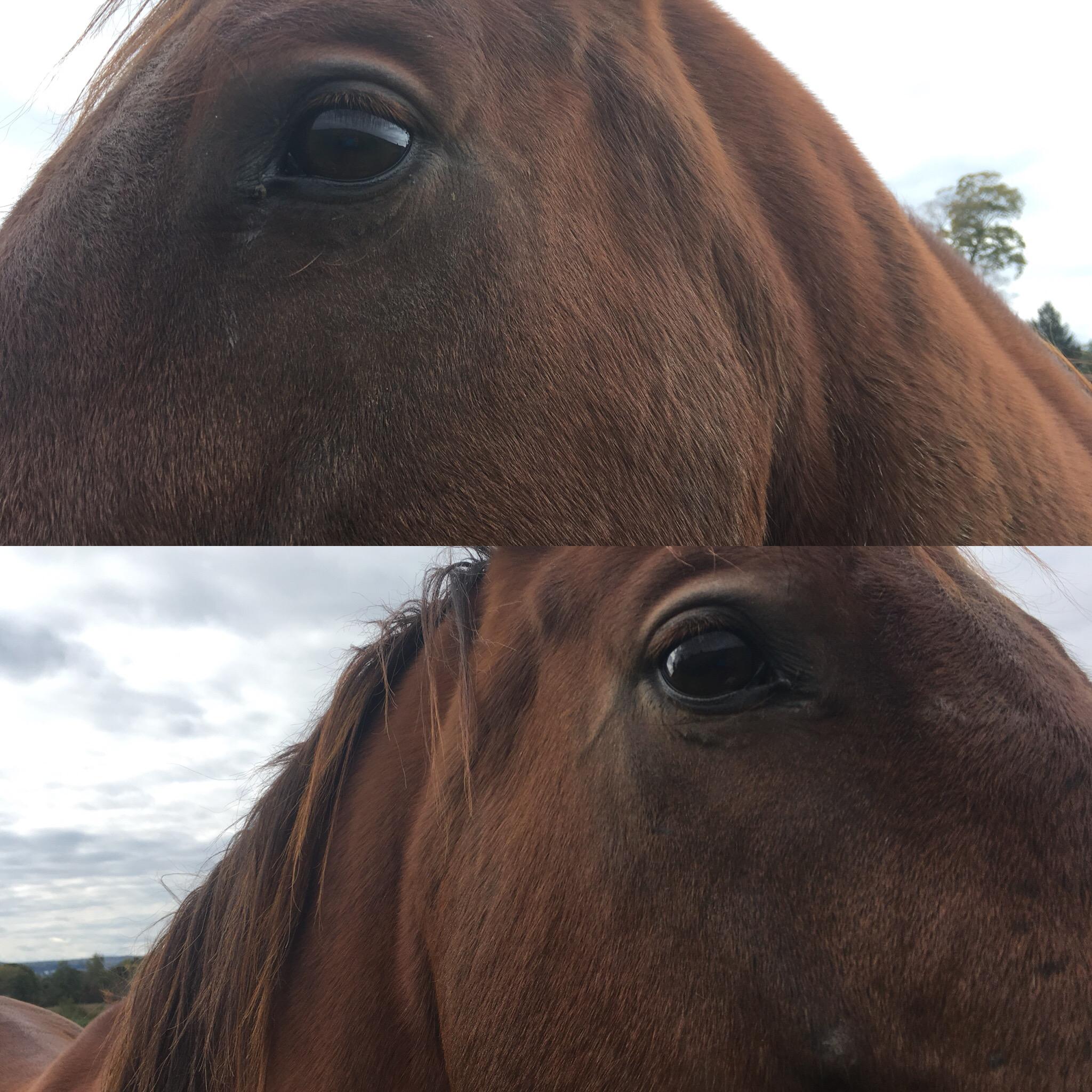
Equestrichondria, or Basically Being a Horse Person
“You’re an equestrichondriac. You are always worried about that horse. He is FINE. Also, I just gave you a story idea for tomorrow. So you’re welcome.”
My last personal horse was so hardy and apparently indestructible (other than his somewhat tenuous grip on reality) that you might have assumed he was a mustang. He was never lame. He could go barefoot or shod with equal nonchalance for the footing. In four years, he never had an abscess, a stone bruise or one lick of scratches. Once, he got a bit of rain rot. That was pretty much it.
My current project Jobber has proven to be a much better match from an emotional, mental and physical standpoint — he takes up my leg, he’s athletic and talented, and he doesn’t have a truckload of mental baggage. The downside to this lovely animal — because few of them are truly perfect unicorns, after all — is that he has a tendency to be a big giant baby any time there’s anything even slightly amiss physically.
In some respects, I like this. A stoic horse can be kind of hard to live with if he just keeps soldiering on despite a raging abscess or strained tendon. I like knowing instantly, without a doubt, that there is something wrong, so that I can address it quickly and efficiently and call the professionals in when necessary.
On the other hand, there was the time Jobber maybe got stung by a bee, or something, and his nose puffed up on the bony part where I didn’t even know a horse could puff up, requiring the application of an ice pack.
Then there was the time he stepped on the only rock out in the field and went immediately head-bobbing lame for the next ten strides until the sting of it went away, I suppose.
Oh, and the time he developed grass mumps, which I didn’t even know was a thing.
I don’t feel like Jobber is particularly accident-prone as far as horses go; he does live out 24/7 and there have certainly been many more fine and healthy days in the past year that I’ve owned him than days on layup. He’s just the kind of horse that things sort of happen to.
Prime example: Jobber’s hind legs stock up when it’s muddy out. When the ground dries up and he’s willingly moving around more, OR we get a nice couple of feet of snow and he’s cruising around on a nice pack, the swelling goes down. It also goes down with exercise, so I try to get him out for a bright forward hand-walk at minimum every day. Stocking up is typically a stalled horse condition, but Jobber is special. I was pretty concerned about this the first winter, but when I realized it was, in fact, simply stocking up and not cellulitis, lymphangitis or any other horrible -itis that would be indicated by slightly chunky but cold, sound legs, I learned to let it go and just manage it. The right hind tends to linger swollen just a little big longer than the left. I don’t know why, but it’s not enough of an issue that I’ve ever gotten a vet involved.

Bonus: hind legs stocked up when he wasn’t moving around much due to the abscess, so this required attention to three out of four legs.
Naturally, in the current weather conditions on the East Coast that have been dumping rain endlessly on saturated ground, it’s pretty muddy around here, and the combination of Jobber having his shoes pulled (hinds a few weeks before fronts, and all under the careful supervision of a devoted farrier) with soul-sucking wet mud means that again the horse has some chunky legs.
Naturally, any memory I had of last year’s stocking up went right out the window.
Despite all logic telling me that, once again, some marginal cold swelling combined with a lack of fever, no sensitivity and a perfectly sound animal was in fact just the new normal of Jobber stocking up a bit in the winter, I panicked. I moped. I hovered around Jobber’s hind legs obsessively while he happily and blissfully-ignorantly ate his grain every day, likely wondering what weird thing I was doing now. I dragged my long-suffering husband to the barn and pointed dramatically at Jobber, who by this point had reduced the swelling in the left hind and had just a bit left in the right.
“Look at his fat leg!”
Erik peered at the horse critically. “The left front? The one where the abscess was?”
“No. The FAT one!”
“… the right front?”
“THE FAT ONE.”
Erik stared first at one hind, then the other. “You’re bonkers. These look exactly the same.”
Later that evening, after a good friend had convinced me that since there was literally zero evidence to support my claim that Jobber must have sustained a deep digital flexor tendon injury or had lurking, silent and unusually cold cellulitis that was causing the lingering stocking-up, I was, in fact, bonkers, I was sitting on the couch stewing, still somehow convinced in the front of my mind that Jobber had suffered some sort of career-ending injury. Erik could tell.
“Are you thinking about Jobber?”
“Yes.”
“What is it with horse people? There is literally nothing wrong with him. I couldn’t even see the swelling. He is FINE.”
I glowered.
“You’re an equestrichondriac. You are always worried about that horse. He is FINE. I just invented a word to describe you.”
He stood up to head to the kitchen.
“Also, I just gave you a story idea for tomorrow. So you’re welcome.”
Earlier this afternoon I returned to the barn — a colder day, with the ground finally starting to harden up. The stocking up was nearly imperceptible. Jobber trotted up sound, like he had every day. All was well.







Leave a Comment